• Title: Disk formation in turbulent massive cores: Circumventing the magnetic braking catastrophe
• Authors: D. Seifried et al.
• First Author’s Institution: Hamburger Sternwarte, Universität Hamberg, Gojenbergsweg 112, 21029 Hamburg, Germany
Making a star requires a large clump of magnetized molecular gas to undergo gravitational collapse. These clumps of molecular gas, often called molecular cloud cores, are slowly rotating but have high initial angular momenta because of their large size. As the molecular cloud core collapses, the diffuse gas, which has a high angular momentum content, is unable to be directly deposited on to the central object and is instead circularized at a distance far from the star resulting in a disc. The rotation of this disc is dictated by gravity and thus should rotate at the Keplerian velocity given by
where G is the gravitational constant, M★ is the mass of the central star, and r is the distance from the star. In agreement, observations of young stars suggest that discs are present in the earliest stages of star formation.
Now include magnetic fields into the mix and this can lead to a catastrophe. In contrast to observations, previous simulations of star formation have shown that the inclusion of magnetic fields can inhibit a rotationally supported disc from forming around the central protostar – this is commonly called the magnetic braking catastrophe. This is because magnetic fields can be very efficient at angular momentum transport. In other words, the magnetic torques applied to the infalling gas is able to remove a substantial amount of angular momentum such that a disc will not form. However, these previous simulations left out one important initial condition in the star forming core: turbulence (i.e., random motions).
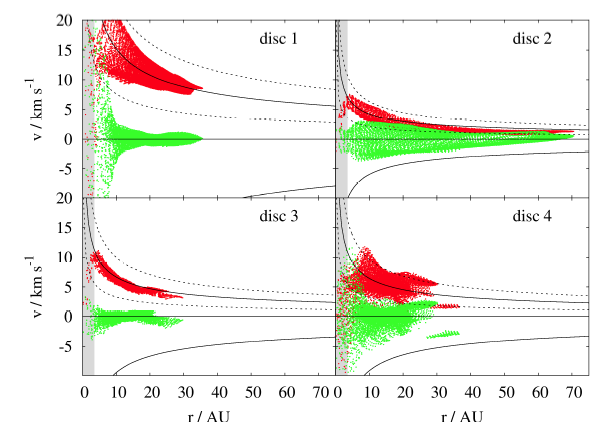
This figure shows the radial dependence of the rotation (red) and radial velocity (green) for the four discs formed for each grid cell in their simulation. The black solid line shows the Keplerian velocity and the dotted lines are 50% and 150% of the Keplerian velocity. The black solid line in the negative velocity range shows the free-fall velocity. The gray shaded region are affected by resolution effects which causes the scatter.
In this article, the authors simulate the collapse of a 100 solar mass molecular cloud core with a density profile and magnetic field profile that decreases with increasing radius. They also add rotation and supersonic turbulence to the core. They find that the cloud core fragments and forms four rotationally supported discs around central protostars. These discs are several tens of AU in size.
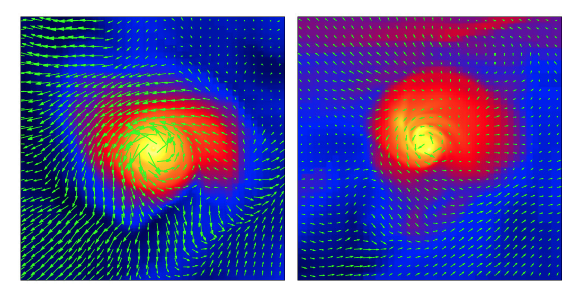
Column density in logarithmic scaling of the discs 1 (left) and 2 (right) in the above figure. These figures are 800 AU in size.
The figure above shows the radial dependence of the rotation and radial velocity of the disks 15 kyr after the protostars have formed. The figure to the right shows a top-on view of column density for discs one and two from the figure above. They also find that the angular momentum vector of the disks do not align with the initial angular momentum of the cloud suggesting that the discs are created by the local angular momentum associated with the turbulent motions rather than the overall rotation of the cloud. The authors find that the angular momentum of the gas is still efficiently removed by the magnetic fields but the Keplerian discs form because of the shear flow generated by the turbulent motions of the gas thus allowing the gas to bypass the magnetic braking catastrophe.


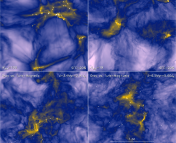
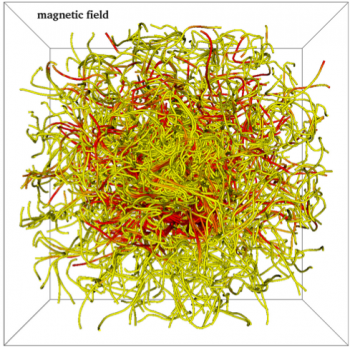
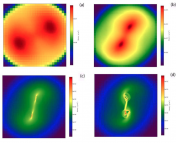

Trackbacks/Pingbacks